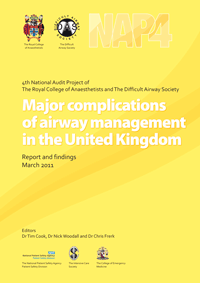
The cause of death was barotrauma as a result of perforation of the right lung as a complication of anaesthetic administration. The relevant underlying condition was a fracture of the distal phalanx of the right little finger…[1]
This seems a bit complicated, but it becomes much more clear in the last 2 sentences.
–
The most striking feature of this Inquiry was that none of the three experienced anaesthetists in attendance gave any consideration to the fundamental option of waking the patient, particularly having regard to the minor nature of the surgery involved. Anaesthetists need to be actively aware of that option, particularly, in anaesthesia for elective procedures for minor or non-essential surgery.[1]
There were many problems with the management of the patient by these three experienced anaesthetists, but the common sense decision to stop digging never seems to have occurred to them.
Sometimes, all it takes to not kill a patient is to stop killing the patient.
Just stop.
Too many times we will proceed on the same course, as if we have passed a point of no return. Why? Because to change our minds is not something that is well taught in EMS schools. Is it any more rare for some organization, like the National Registry of EMTs to test for our ability to change our minds?
We are trained to fit the patient to the protocol, then stick to the protocol.
We are not taught to understand the obvious.
Our treatments are expected to produce changes in patient presentation. We are expected to reassess our patients, but how many of us are taught how to respond to unexpected, or undesirable, changes in patient presentation?
–
I still talk with people who are shocked that I did not complete all of the treatments listed in a protocol. Even after I point out to them that the patient was responding in a way that made continuing with the protocol seem dangerous – dangerous for the patient.
How many of us just do not care about the patient, but will protocol the patient to death?
How many of us have been taught that we will never get in trouble as long as we stick to the protocols?
How is a paramedic less responsible for killing a patient by taking actions that are entirely to protect the paramedic and not protect the patient?
How is it possibly ethical to mistreat our patients to protect ourselves from legal responsibility for our actions?
–
See also:
What Does it Take to NOT Kill a Patient – Part I – 4/03/2011
What Does it Take to NOT Kill a Patient – Part II – 4/04/2011
What Does it Take to NOT Kill a Patient – Part III – 5/20/2011
What Does it Take to NOT Kill a Patient – Part IV – 5/23/2011
What Does it Take to NOT Kill a Patient – Part V – 5/30/2011
–
Footnotes:
–
[1] Major complications of airway management in the UK – 2011 NAP4
Royal College of Anaesthetists
Quotation (page 8/54 Section 1)
Page with link to various full text pdf versions of report, press release, executive summary, and full report.
.


Very good perspective.